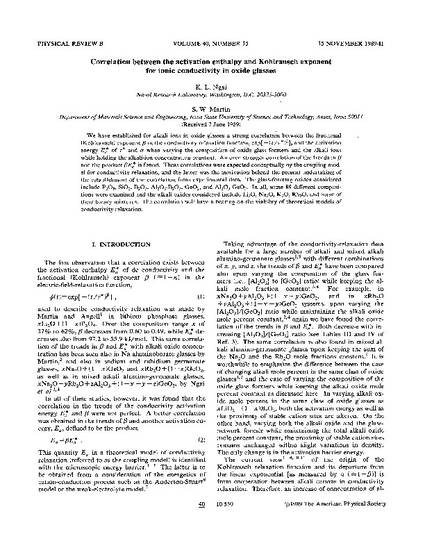
We have established for alkali ions in oxide glasses a strong correlation between the fractional (Kohlrausch) exponent β in the conductivity relaxation function, exp[-(t/τ*)β], and the activation energy E*a of τ* and σ when varying the composition of oxide glass formers and the alkali ions while holding the alkali-ion concentration constant. An even stronger correlation of the trends in β and the product βE*a is found. These correlations were expected conceptually by the coupling model for conductivity relaxation, and the latter was the motivation behind the present undertaking of the establishment of the correlation from experimental data. The glass-forming oxides considered include P2O5, SiO2, B2O3, Al2O3-B2O3, GeO2, and Al2O3-GeO2. In all, some 89 different compositions were examined and the alkali oxides considered include Li2O, Na2O, K2O, Rb2O, and some of their binary mixtures. The correlation will have a bearing on the viability of theoretical models of conductivity relaxation.
Available at: http://works.bepress.com/steve_martin/26/

This article is from Physical Review B 40 (1989): 10550–10556, doi:10.1103/PhysRevB.40.10550. Posted with permission.